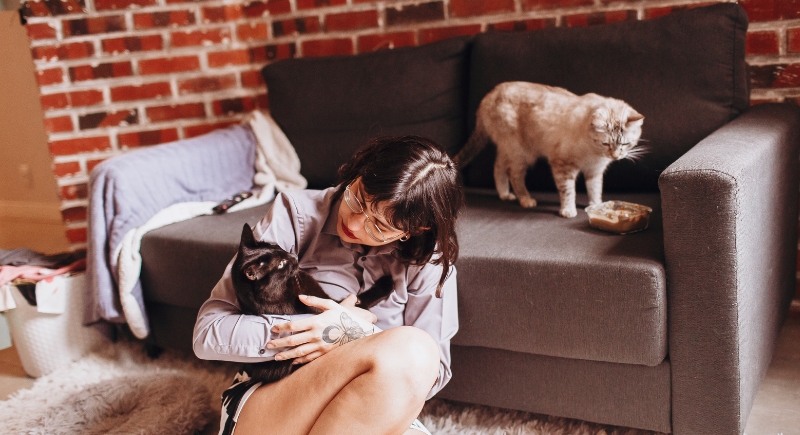Why Is Your Cat Not Using the Litter Box? It Might Not Be What You Think
A cat that suddenly stops using the litter box can throw any home into chaos. It’s frustrating to clean up after them, but what looks like mischief is usually a sign of something deeper. Cats are particular about their bathroom habits, and when they start going elsewhere, it often means they’re trying to tell you something. Before assuming it’s bad behavior, it helps to look at the bigger picture of what’s going on in their world.
Medical Reasons You Shouldn’t Ignore

Image via Canva/Odua Images
Cats are experts at hiding pain, so litter box issues might be the first visible clue that something’s wrong. Constipation and other inflammatory bowel diseases can make them associate the box with discomfort. Arthritis is another common culprit, since stepping into the box or squatting might be painful. Declawed cats can struggle with certain textures of litter that press into their tender paws. Conditions like diabetes or kidney disease can make a box too dirty too quickly, prompting pets to seek alternative places to go.
Some felines also struggle with cognitive changes as they age, leading to confusion or anxiety around the box. Even something as simple as long, matted fur near the backside can make the litter box feel uncomfortable. If your kitty suddenly changes bathroom habits, your first step should always be a vet check to rule out medical problems before assuming it’s behavioral.
The Environment Matters More Than You Think
Location matters because cats can be surprisingly picky about their litter box setup. If placed in a noisy laundry room or a corner where they feel trapped, they might not get used. These animals prefer quiet, low-traffic spaces where they can keep an eye on their surroundings and leave quickly if needed.
The type of litter is another factor. Many cats prefer unscented, clumping litter with a medium or fine texture, especially if it’s what they used as kittens. Too much litter can be just as bad as too little. Box design matters too. High-sided or covered boxes may make your house look neater, but they can feel like a trap to a nervous cat or a challenge to an older one with stiff joints.
Stress and Household Dynamics

Image via Pexels/Helena Lopes
In multi-cat households, one of them might guard the litter box, using aggression or just body language to keep others away. That can force a more timid cat to find an alternative spot. Even without direct bullying, a pet under stress from changes in routine, new pets, or loud environments might decide the litter box is not a safe place.
Cats are also creatures of habit. A sudden switch to a new type of box or litter can unsettle them. For some, even the smell of scented litter is enough to send them searching for another bathroom spot.
How to Get Things Back on Track
Start with the basics: keep the litter box clean. Scoop daily and give it a complete wash every couple of weeks. The rule of thumb is one box per cat plus one extra, spread throughout the house so no kitty can block all of them. Place boxes in calm areas away from food and water bowls, and experiment with styles and litter types if you suspect they dislike the current setup.
If your cat has developed a habit of using the same wrong spot, clean it thoroughly with an enzyme-based cleaner to remove any lingering scent and make the area less attractive. Stress relief can also go a long way. Use calming pheromones, maintain a predictable routine, and provide plenty of hiding places and safe perches.
The most crucial step is patience. Punishing your pet will only damage trust and make the problem worse. Instead, pay attention to what they’re trying to tell you. Sometimes it’s a health issue, other times it’s about comfort, and often it’s a mix of both. With a bit of detective work, you can help your cat feel comfortable using the litter box again.